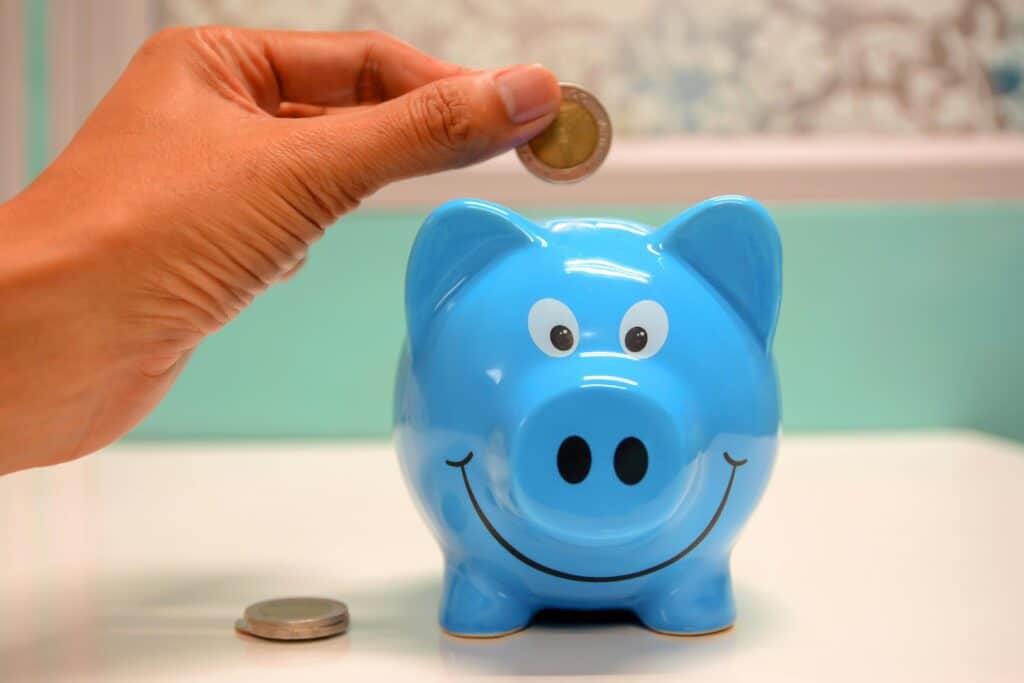
Imagine graduating from college and landing your first job, only to see your paycheck vanish each month because of school loans. For many students and millennials, this moment feels less like a celebration and more like stepping into a trap. What most borrowers don’t realize is that hidden pathways exist—small rules buried in forgiveness programs—that can save them thousands of dollars. Yet banks and loan servicers rarely explain these opportunities, leaving many in the dark.
According to the U.S. Department of Education, more than 43 million Americans carry federal student loan debt, totaling $1.77 trillion in 2024. The average millennial borrower owes about $40,000, a sum that can take decades to repay. But while the numbers look intimidating, changes in federal policy are opening doors for forgiveness faster than many people realize. Some of these opportunities aren’t widely advertised, which is why so many borrowers miss out.
One example is the Public Service Loan Forgiveness (PSLF) program. It cancels remaining balances after 120 qualifying payments for those working in public service jobs. The Department of Education recently reported that over 850,000 borrowers have already had loans forgiven under PSLF since 2021. But here’s the hidden part: certain deferments and forbearances now count toward those 120 payments if they occurred during the pandemic pause. Many borrowers don’t know this adjustment moved them years closer to forgiveness.
Another overlooked detail comes from income-driven repayment (IDR) plans. Normally, forgiveness takes 20–25 years of payments, but new rules in 2024 allow borrowers with older loans or smaller balances to qualify in as little as 10 years. The Education Data Initiative explains that borrowers with balances under $12,000 may now see forgiveness after just 120 payments—a loophole that could cut repayment time in half for many millennials.
To make this clear, here’s a comparison:
| Forgiveness Path | Old Timeline | New Opportunity in 2024 | Potential Savings |
|---|---|---|---|
| PSLF | 10 years of payments | Pandemic deferments now count | 1–3 years sooner |
| IDR | 20–25 years of payments | Some balances forgiven in 10 years | $10,000–$15,000 |
| SAVE Plan | Payments tied to 10% of income | Now tied to 5% for undergrad loans | Lower monthly costs |
(Based on U.S. Department of Education updates and Education Data Initiative reports)
For students and millennials struggling to balance loan payments with everyday life, these hidden forgiveness rules can make the difference between debt that lasts decades and relief that arrives much sooner. Scholarly Sphere shares blogs about education and learning designed to break down these complicated policies into simple, clear steps. When borrowers understand the system, they gain the power to turn hidden loopholes into real savings.
The truth is, school loans don’t always have to be lifelong debts—if you know where to look.
The Hidden Loopholes of School Loans Forgiveness in 2024

For decades, borrowers believed that paying off school loans was a never-ending cycle. Yet, in 2024, changes in federal policy and overlooked program details are rewriting the rules. The challenge is that these opportunities are buried in fine print, making them easy to miss. By uncovering these “hidden loopholes,” students and millennials can shorten repayment, lower costs, and even achieve complete forgiveness sooner than expected.
The Landscape of Forgiveness
The U.S. Department of Education reports that 43 million borrowers carry federal school loan debt, totaling $1.77 trillion. The Education Data Initiative explains that the average balance for millennials is $40,438, with many still paying loans decades after graduation. But forgiveness programs like Public Service Loan Forgiveness (PSLF), Income-Driven Repayment (IDR), and the new Saving on a Valuable Education (SAVE) Plan are reshaping repayment timelines.
The most striking change in 2024 is how previously excluded periods now count toward forgiveness. For instance, months during the pandemic pause, certain forbearances, and even time in deferment may all push borrowers closer to forgiveness under PSLF and IDR. According to the Department of Education, this adjustment alone has already helped millions of borrowers get credit for years they once thought “didn’t count.”
Loophole #1: The Pandemic Pause Counts Toward PSLF
One of the least known benefits of the COVID-19 loan pause is that every month between March 2020 and September 2023 counted as a qualifying payment for PSLF—even if borrowers made no payments. The Department of Education confirmed that this credit applies to anyone working full-time in eligible public service jobs during that time.
This means that a borrower who worked in public service for those three years is already 36 payments closer to forgiveness. For millennials who graduated in 2019 and entered nonprofit or government jobs, this loophole may cut their timeline by almost a third.
| Program | Normal Requirement | Pandemic Loophole | Impact |
|---|---|---|---|
| PSLF | 120 payments | Pause months count | 36 months closer |
| TEPSLF (Temporary Expanded PSLF) | Limited exceptions | Still includes pause credit | Easier qualification |
Loophole #2: IDR Account Adjustment
Another underused opportunity comes from the one-time IDR Account Adjustment, announced in 2023 and continuing through 2024. This adjustment gives borrowers credit for:
- Time in repayment, even under non-IDR plans
- Certain forbearance and deferment periods
- Economic hardship deferments
The Education Data Initiative reports that millions of borrowers have already seen their balances reduced or forgiven outright. In fact, the Department of Education stated that over 800,000 borrowers had loans forgiven through this adjustment as of mid-2024.
For students and millennials who may have spent years on the wrong repayment plan, this loophole can instantly move them much closer to forgiveness.
Loophole #3: Forgiveness After 10 Years for Small Balances
The SAVE Plan, introduced in 2023 and expanded in 2024, carries another hidden benefit: borrowers with smaller balances can achieve forgiveness in just 10 years instead of 20–25 years.
According to the Department of Education, balances under $12,000 qualify for this faster forgiveness. For each additional $1,000 borrowed, another year is added to the timeline, but the maximum is still far shorter than traditional plans.
| Balance Size | Old Forgiveness Timeline | New SAVE Forgiveness Timeline |
|---|---|---|
| $10,000 | 20 years | 10 years |
| $12,000 | 20 years | 10 years |
| $15,000 | 20 years | 13 years |
| $20,000 | 20–25 years | 18 years |
For millennials who started at community colleges or borrowed small amounts, this loophole may cut repayment time in half.
Loophole #4: Double-Counting Payments Through Consolidation
A surprising strategy involves consolidating loans under the right circumstances. Normally, consolidation resets the repayment clock. But under the IDR adjustment, borrowers can now consolidate loans and still keep credit for past qualifying payments.
For example, someone with 50 payments on a subsidized loan and 40 payments on an unsubsidized loan can consolidate both, and the new loan will reflect the higher payment count. This loophole is especially valuable for borrowers juggling multiple loan types.
Loophole #5: Forgiveness Through Career Paths
Borrowers working in nonprofit, government, or teaching positions qualify for forgiveness faster, yet many don’t realize how broad eligibility is. The Consumer Financial Protection Bureau highlights that PSLF applies to public schools, universities, military service, and even many healthcare systems.
This means millennials who enter these careers may unknowingly qualify. By submitting the PSLF Employment Certification Form each year, they lock in progress toward forgiveness—even if they later switch jobs.
Practical Steps for Students and Millennials
For borrowers overwhelmed by fine print, here are key steps to uncover forgiveness faster:
- Check your loan type — Only federal loans qualify for major forgiveness programs. Consolidate if needed.
- Track your payment history — Review your loan servicer’s records for qualifying payments.
- Submit employment certification annually — PSLF requires yearly verification to avoid surprises.
- Explore SAVE plan enrollment — Payments are capped at 5% of income for undergrad loans, easing financial strain.
- Stay updated — Rules shift often, and small changes can save thousands.
Why So Many Borrowers Miss Out
The reason these loopholes remain “hidden” is because servicers and banks rarely promote them. Their job is to collect payments, not to shorten repayment terms. As Brookings Institution researchers explain, misinformation and complexity are major barriers for borrowers.
This is where ScholarlySphere plays a role. By sharing clear blogs about education and learning, we help students and millennials navigate the maze of loan policies. Instead of getting lost in government jargon, readers learn practical, step-by-step strategies to make the most of forgiveness opportunities.
The Bigger Picture
Forgiveness is not only about individual borrowers—it reshapes the economy. The Federal Reserve notes that high school loans debt delays home purchases, business creation, and even family planning. By cutting repayment timelines, forgiveness frees up income that flows back into local communities. Public health researchers also warn that long-term debt stress is tied to anxiety and depression, making forgiveness a matter of both financial and mental well-being.
When borrowers unlock hidden opportunities, they’re not just saving money—they’re reclaiming years of their lives.
Turning Hidden Loopholes into Real Savings


For many years, students and millennials felt trapped under the weight of school loans. Monthly payments often consumed income that could have gone toward rent, savings, or even building a future. But the truth revealed in 2024 is that forgiveness is closer than many borrowers realize. By learning how to use hidden rules and little-known program changes, debt can be reduced faster and relief can come sooner.
The first loophole worth remembering is the pandemic pause. Months that borrowers once thought were “lost” are now counted as qualifying payments toward Public Service Loan Forgiveness. For those working in nonprofit or government jobs, this small detail can shave years off repayment. The second loophole comes from the IDR Account Adjustment, which gives retroactive credit for deferments and forbearances. Many borrowers have already seen their balances fall sharply because of this change.
Another key opportunity is the SAVE plan. With balances under $12,000 forgiven after just 10 years, students and millennials with smaller debts are no longer trapped in decades of repayment. And by consolidating wisely, borrowers can double-count payments that otherwise would not align, a strategy that often goes unnoticed. Together, these loopholes highlight how paying attention to details can mean the difference between 25 years of debt and just 10.
To keep it simple, here’s a quick recap table:
| Loophole | Benefit | Who It Helps Most |
|---|---|---|
| Pandemic Pause | 36 months of “free” PSLF credit | Public service workers |
| IDR Adjustment | Retroactive credit for deferments/forbearances | Long-term borrowers |
| SAVE Plan | Forgiveness in 10 years for small balances | Students with <$12k debt |
| Consolidation Trick | Keeps highest payment count | Borrowers with multiple loans |
For many borrowers, the hardest part is not qualifying—it’s knowing these opportunities exist. Banks and loan servicers are not eager to share them, since faster forgiveness means less money collected. That’s why staying informed through education resources is so important. When students and millennials understand the fine print, they unlock real financial freedom.
The reality is this: school loans are not unbreakable chains. They are contracts with rules that can work for or against you, depending on how much you know. By taking the time to learn about forgiveness programs and hidden details, borrowers can finally tip the system in their favor. The future doesn’t have to be one long repayment plan—it can be a fresh start built on financial clarity and opportunity.
The question is, will you take the steps to uncover these hidden loopholes and claim the freedom that’s waiting for you?
Works Cited
Student Loan Borrower Assistance. Income-Driven Repayment & One-Time Adjustment. https://studentloanborrowerassistance.org/for-borrowers/dealing-with-student-loan-debt/repaying-your-loans/payment-plans/income-driven-repayment/
Federal Student Aid. Public Service Loan Forgiveness Data. https://studentaid.gov/data-center/student/loan-forgiveness/pslf-data
U.S. Department of Education. IDR Account Adjustment Announcement. https://studentaid.gov/announcements-events/idr-account-adjustment
U.S. Government Accountability Office (GAO). Federal Student Loans: Preliminary Observations on Borrower Repayment. https://www.gao.gov/products/gao-24-107150
U.S. Government Accountability Office (GAO). Student Loan Relief in Cases of College Misconduct. https://www.gao.gov/products/gao-24-106530
Education Data Initiative. Student Loan Forgiveness Statistics. https://educationdata.org/student-loan-forgiveness-statistics
BestColleges. Student Loan Forgiveness Facts and Statistics in 2025. https://www.bestcolleges.com/research/student-loan-forgiveness-statistics/
Cato Institute. The State of Student Loan Forgiveness: June 2024. https://www.cato.org/blog/state-student-loan-forgiveness-june-2024


